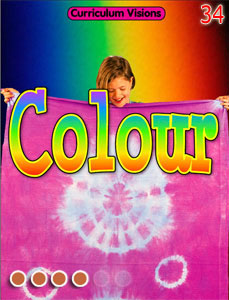We see the world in colour. To make things coloured, we use two types of coloured chemicals: dyes and pigments.
A dye, such as used for cloth or in food, is a solution containing a coloured substance dissolved in it. During dyeing, dye molecules have to be deposited from the solution onto the material that is being dyed. This has to happen in a way that makes them stick fast and not be likely to return to the solution again.
A pigment (such as is used in paints) is a coloured insoluble substance (for example, a powder) suspended in a liquid. It does not form a solution.
History
Egyptian tombs contain both wall paintings and fabrics that use dyes and pigments. Inscriptions found in ancient Egypt show that over 4,000 years ago, the dyeing industry was so well established that it was possible to write down methods for dyeing.
Making natural dyes proved a time-consuming and difficult business. Indigo, for example, was fermented in vats. It released a colourless solution. The clothes were steeped in it and then exposed to the air. Only as the dye dried did the chemical on the cloth react with the air to produce a blue colour.
How dyes work
Amazingly, considering there is such a wide variety of colour in our world, we make most of our dyes from black materials – coal tar or crude oil.
The most important market for dyes is in dyeing textiles. Natural fibres, such as wool and cotton, and some artificial fibres, are dyed. Leather, paper, food, and cosmetics also contain dyes.
Until quite recently dyes were extracted from natural substances, mainly plants.
Artificial dyes were developed starting in 1856. The date is precise because the first artificial dye was made in a chemistry laboratory. In that year William Henry Perkin, an English chemist, discovered the dye known simply as mauve.
The discovery and manufacture of mauve had the most enormous implications for the dyeing industry. Until this time huge areas of land were used to grow plants that produced natural dyes. But after Perkin’s discovery that better dyes could be made more reliably and cheaply using chemistry, the natural dye industry immediately began to decline, while the synthetic dye industry boomed.
More experiments quickly produced dyes that were better than mauve. Soon it was possible to produce synthetic indigo (the colour used to dye blue jeans), for example.
Most natural dyes do not stick easily to textiles. As a result, another chemical, is needed to make the dye bond fast. Most synthetic dyes do not need to use this extra chemical. As a result, dyeing with synthetics is faster, easier, and cheaper.
These dyes are often more colourfast in light than natural dyes are and can be made brighter, more intense, and varied to meet the needs of the customer.





